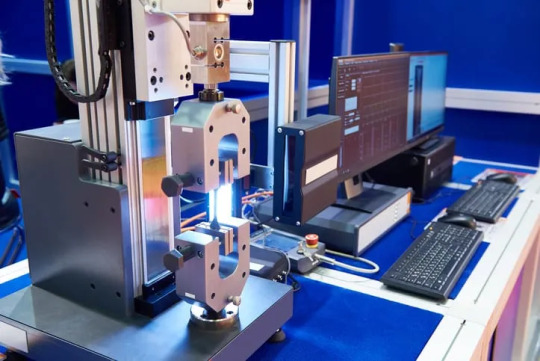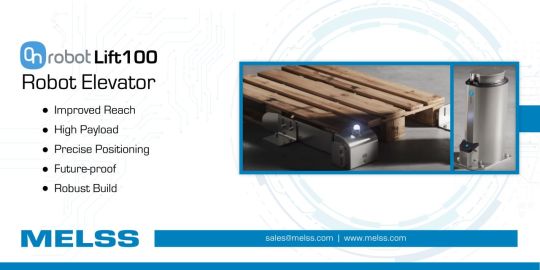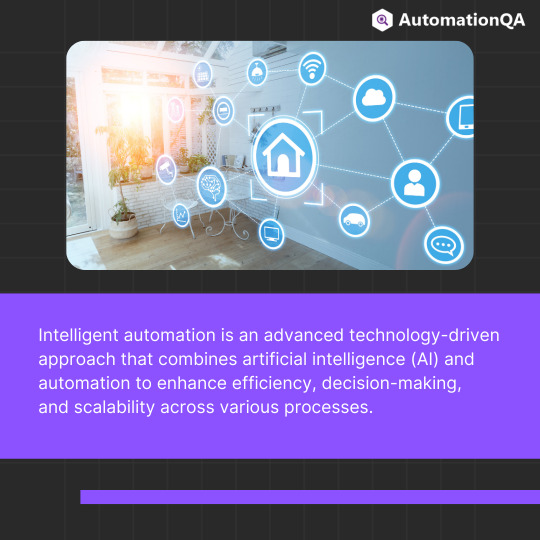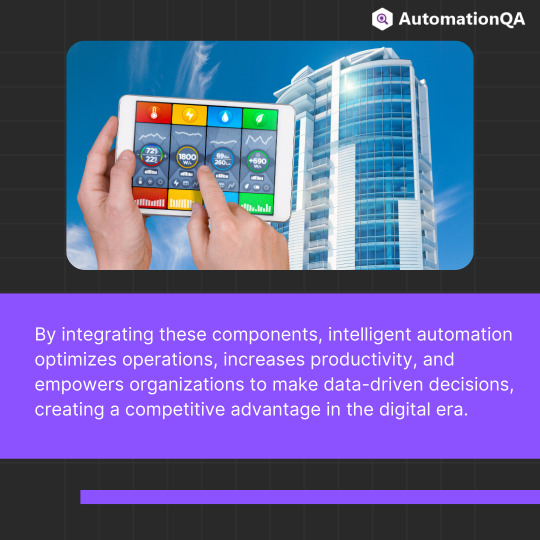#industrial automation Testing
Explore tagged Tumblr posts
Text

RK800 #313 248 317 - 00
#thinking about virtual only RK800...#daymn#poor fella to put it lightly#art#fan art#my art#dbh#detroit become human#connor rk800#dbh connor#dbh rk800#rk800#fun fact for the UI I used an actual UI of a program where I do industrial automation and testing
206 notes
·
View notes
Text

The Louisiana Electric NTI-3501 High Voltage Test Box is a reliable testing solution for industrial and utility applications. Designed for safety and precision, this test box helps technicians check and verify high voltage systems with confidence. Its durable build and easy-to-use interface make it ideal for daily operations in power plants, substations, and maintenance facilities. The NTI-3501 ensures accurate performance under tough conditions, making it a trusted choice in high voltage testing. At Auto2mation, we provide tested and dependable products like the NTI-3501 to meet your electrical safety needs. Shop now for reliable high-voltage testing equipment.
#industrial automation#industrial equipment#industrial spare parts#industrial#automation#industrial and marine automation#industrial parts supplier#industrial innovation#automation solutions#Marine Automation#marine equipment#marine spare parts#auto2mation#Louisiana Electric#Test Box#Meter
0 notes
Text
Enhancing Salt Spray Chamber Performance with PLC Automation – Powered by NX-ERA Xpress

In the industrial domain, corrosion is not just a problem, it's a stealthy destroyer. From car parts to ocean gear to electronics, the shadow of rust looms over all. That's where the salt spray chamber comes in useful, enabling us to simulate the most extreme conditions. However, the catch is that manual systems don’t cut it anymore.
Enter the NX-ERA Xpress PLC—a smart, compact PLC for industrial automation that’s changing the game for good.
We at Messung have a strong expertise in programmable logic controllers, and today we're demonstrating to you why a salt spray chamber needs a rugged modular PLC for demanding environments that's fluent in Industry 4.0.
What is a Salt Spray Chamber?
A salt spray chamber is a specialized testing environment that helps industries evaluate the durability of coatings, components, and materials under harsh environments. These rooms are intended to:
● Simulate corrosive environments
● Test the metals, coatings, and components
● Provide accelerated ageing tests in controlled environments
Industries that swear by it:
● Automotive Companies
● Paint and Coating Producers
● Marine Equipment Manufacturers
Electronics OEMS
Why Automate Salt Spray Chambers with a PLC?
Consider switching temperatures, humidity levels, and spray intervals by hand every hour. Time-consuming, prone to error, and a time-waster. A PLC (Programmable Logic Controller) coordinates the whole process—managing logic, control, timing, and communication like a maestro directing a symphony.
Meet the NX-ERA Xpress PLC – your multi-protocol, multi-project, one seamless controller. It never sleeps, never messes up, and always provides you with accurate data. From Messung Industrial Automation, a cost-effective PLC that is MQTT and OPC UA enabled, UL certified, and ready for the most demanding automation tasks.
Key Roles of a PLC in Salt Spray Chambers
Behind each reliable corrosion test is a smart PLC working diligently to maintain consistency, compliance, and control. What it provides to the chamber is:
Precise Temperature Regulation - Dry bulb, wet bulb, ambient—all held constant with surgical accuracy by PID loops. No ups and downs, just stable, calibrated climates.
Humidity Control - Because one droplet too much or too little throws the test off balance. A smart PLC fine-tunes every moisture movement to mimic real-world conditions.
Spray System Management - Controls mist cycles, nozzle diameters, sizes, and flows to ASTM/BIS/ISO specifications. No guessing—only predictable, programmable spray patterns.
Test Cycle Automation - Start, stop, repeat—all done without ever lifting a finger. Install it once, and the PLC takes care of complex test schedules with ease and accuracy.
Alerts & Notifications - Monitors for anomalies, alerts you in real-time, and records deviations for later reference. The watchdog your lab never knew it had.
In short, a robust PLC is not just a controller—it's the brain behind every flawless salt spray test. Accuracy-driven, standards-enabled, and always on the job.

How NX-ERA Xpress PLC Transforms Salt Spray Testing
In the high-pressure world of corrosion testing, consistency and accuracy are not just a good idea, but a necessity. Manual control isn't capable of keeping up with tight industry regulation or sophisticated test cycles. That's where the NX-ERA Xpress PLC comes in—turning laborious processes into error-free, data-driven automation that produces perfect results, every time.
Let's break it down.
Accuracy with PID Control - Control temperature and humidity like an expert, with advanced PID algorithms that make continuous adjustments in both dry and wet bulb parameters. This ensures every salt spray cycle is to your exact specification—no overshoots, no drift—so you achieve flawless repeatability in every test.
Versatile I/O for Complete Control - From compressors and solenoid valves to heating coils and compressors, the modular I/O design lets you mix analogue and digital channels in any combination necessary. You have total control over each chamber component, expanding and contracting as test demands vary or grow.
Communication-Ready - Native support for MQTT, OPC UA, Modbus TCP, PROFINET, and EtherCAT allows for plug-and-play real-time data logging to your SCADA/HMI dashboards. Remote monitoring of vital parameters, automatic export of logs, and integration with your Industry 4.0 configuration become a breeze.
Custom Tests, Custom Logic - Whether ASTM B117, ISO 9227, or your own proprietary cycle, programmable sequences allow you to specify start/stop times, spray cycles, and number of repetitions. Switch to new standards with ease without re-wiring or re-engineering your setup.
Remote Diagnostics - Eliminate extraneous lab trips with integrated troubleshooting capabilities. See live status, detect faults, and edit logic remotely—so you can maintain tests operating smoothly, even from miles away.
With the NX-ERA Xpress PLC, salt spray testing is smarter, faster, and more reliable. Upgrade your chamber control today and see your lab's efficiency—and confidence—take flight.
Industry Applications
From the lab to the great outdoors, salt spray testing holds up over time in any sector. It's the gold standard for corrosion resistance testing, subjecting your products to the ultimate test of the harshest conditions, without breaking a sweat.
Automotive - Rust-proofing bumpers, body panels, and alloy wheels. Because no one wants corrosion writing their brand off.
Paint & Coating - Verify finish quality in tough conditions. Observe how your coat stands up when the weather gets nasty.
Electronics - Ensure devices do not short or fail in high-salt air zones. Because reliability should not vanish with the sea breeze.
Marine & Offshore - Replicate real sea spray on metal parts and composite structures. For wave-riding performance and not rust.
Whether you're creating for highways, oceans, or skies, salt spray testing subjects your innovations to the elements, rain or shine. Test smart. Build bold. Trust durability.
Unique Features of the NX-ERA Xpress PLC
Where ruggedness, connectivity, and accuracy meet, the NX-ERA Xpress PLC is the ideal controller for the industrial automation of the new age. Built to satisfy the tough requirements of the new factory and laboratory, it provides an ideal combination of cutting-edge features designed for accuracy.
Small, and robust structure - Designed to be flexible and space-efficient installation without sacrificing strength.
IoT-based PLC for automation control in real-time - Enables end-to-end data exchange and remote monitoring to enhance Industry 4.0 capabilities.
Supports multiple protocols natively - Enables effortless connection to industrial networks of different types like PROFINET, EtherCAT, and Modbus TCP.
Smoother is used as a mission-critical safety PLC - Designed to ensure fail-safe operation where safety is never an option.
Designed to endure tough conditions with rock-solid dependability - Built to last through the toughest conditions, providing smooth operation under trying conditions.
Together, these capabilities make the NX-ERA Xpress PLC a valuable ally in taking your automation journey with confidence and control.
IoT PLC for Industry 4.0 Labs
In a smart lab, you decide in milliseconds. You need a PLC that can talk with your MES, ERP, cloud dashboards, and even mobile applications.
NX-ERA Xpress is an intelligent programmable controller for intelligent manufacturing systems that connects, communicates, and controls. With MQTT over TLS 1.2, OPC UA, and real-time updates, it's your gateway to Industry 4.0.

Why Messung for Your Salt Spray Automation?
Where passion and precision meet, innovation happens. We combine decades of experience with automation driven by innovation to provide smart salt spray solutions designed for performance, efficiency, and durability.
● 4 Decades of Automation Experience
● Strong R&D Backing and Engineering Support
● Global system integrator network
● Economical and UL-approved PLC alternatives
● Backed by a promise—We don't just automate, we enhance.
Join forces with Messung and go beyond mere automation—into a world where quality, reliability, and intelligent control govern every result.
Final Word: Don’t Let Rust Eat Into Your Reputation
Salt spray testing is the ultimate protection in demonstrating your product's endurance. One mistake—whether it's temperature fluctuation or skipped spray cycle—can cause damage to your brand, expense in recalls, or safety malfunction. Why take the risk?
Let NX-ERA Xpress PLC, an intelligent compact PLC for industrial automation, get behind the wheel. With IoT-capable PLC functionality, multi-protocol capability such as Modbus, PROFINET, EtherCAT, OPC UA, and MQTT, it provides reliable precision you can count on. Supported by our 4 decades of automation expertise, the rugged modular PLC for extreme environments guarantees your salt spray chamber operates like clockwork—every time.
Whether you are replacing or starting from scratch, this budget PLC with MQTT and OPC UA future-proofs your test environment. Salt corrodes. But not with our NX-ERA Xpress PLC. Your performance—and your reputation—are never compromised.
FAQs
Why is NX-ERA Xpress superior to other compact PLCs?
It combines tough construction, multiprotocol support, onboard IoT capabilities, and price efficiency—all within a compact size.
Which laboratories can be served by this Smart PLC?
Any corrosion, materials, or environmental testing laboratory requiring precise, automated, and repeatable results will be significantly helped.
Is NX-ERA Xpress suitable for harsh environments?
Indeed. It's a tough PLC that can withstand heat, humidity, and electrical stress—perfect for industrial-strength test labs.
Does NX-ERA Xpress support SCADA systems?
Yes. With natively supported MQTT, OPC UA, and Modbus TCP, it integrates seamlessly with the majority of contemporary SCADA systems.
#compact PLC#programmable logic controllers#rugged modular PLC#Industry 4.0.#salt spray chamber#PLC (Programmable Logic Controller)#cost-effective PLC#robust PLC#PID Control#smart PLC#Modbus#SCADA#salt spray testing#industrial automation#IoT-based PLC for automation control
0 notes
Text
AI Automation in Financial Services: Simplifying Complexity, Boosting Confidence
In today’s fast-paced digital economy, the financial services industry is under constant pressure to do more—with less time, fewer resources, and tighter regulations. And if you're in the middle of it, juggling innovation with compliance, you already know the struggle.
That’s where AI-powered automation is flipping the script. Especially when it comes to test automation and quality assurance, AI isn’t just a buzzword anymore—it’s the secret weapon for banks, insurance companies, and fintechs trying to stay agile
And at Provar, we’re helping financial teams do just that.
We're not just another automation tool—we're a Salesforce Automation solution built for teams who care about quality, compliance, and speed. So let’s break down what AI Automation in Financial Services really looks like today—and how it can transform the way your teams deliver.
Why Financial Services Need AI—Yesterday
Financial platforms aren’t like your average app. They’re packed with complex logic, integrated systems, sensitive data, and mountains of compliance needs.
Here’s what makes testing in financial services so tricky:
Multi-layered workflows — Think mortgage approvals, insurance claims, loan underwriting. All of these involve a lot of steps and stakeholders.
Frequent regulation updates — A single change in a policy rule or a compliance requirement can impact dozens of processes.
Tight security protocols — From encryption to user access, testing needs to consider cybersecurity at every step.
System integrations — CRMs, payment gateways, legacy systems, APIs—all have to talk to each other perfectly.
Testing all of that manually? Good luck. This is why automation is a no-brainer. And with AI added into the mix? You’re not just making things faster—you’re making them smarter.
How AI Takes Financial Testing to the Next Level
You’ve probably heard the term "AI-driven automation" thrown around a lot. But what does that actually mean when you're testing a Salesforce-powered banking application, or validating a loan approval flow in production?
Here’s how Provar’s AI automation capabilities help financial services teams work faster, reduce risk, and stay compliant:
🔍 Smarter Test Coverage: AI doesn’t just help create tests faster—it helps identify what actually needs to be tested. Imagine AI scanning your app, highlighting critical flows, and suggesting tests based on risk, user behavior, and past defects. That’s contextual intelligence at work.
🧠 Self-Healing Tests: One of the biggest pains in traditional testing? Your test cases break every time the UI changes. With Provar’s self-healing tests, AI automatically adapts your tests to UI updates—so you’re not stuck fixing scripts all day. ⚙️ Continuous Testing in CI/CD: Thanks to CI/CD integration, you can run automated tests every time you push changes. That means bugs are caught early, releases stay on schedule, and your team doesn’t have to choose between speed and quality.
🔒 Compliance-Ready Validation: With financial apps, it's not enough that features work—they need to prove they’re working according to standards. Provar’s testing platform captures every test run, result, and change—making it easier to stay audit-ready.
Quick Glance: Traditional Testing vs. AI Automation
When it comes to test creation, traditional testing relies heavily on manual scripting, which can be time-consuming and repetitive. In contrast, Provar's AI-powered automation generates tests much faster, reducing the initial workload and speeding up the entire process.
Test maintenance is another major difference. Traditional methods often break when the UI changes, requiring high effort to fix. Provar’s automation tools offer self-healing capabilities, automatically adapting to UI updates, saving your team tons of time and frustration.
For compliance validation, traditional testing usually involves manual documentation, which is both tedious and prone to error. With Provar, automated reporting simplifies compliance checks and ensures you stay audit-ready with less effort.
Regression testing using traditional methods is typically slow and resource-intensive. AI automation enables continuous and scalable testing, so your releases remain stable without burning out your QA team.
And finally, team collaboration tends to be siloed in traditional environments, with testers, developers, and product teams often working separately. Provar supports a unified platform that enhances visibility and fosters cross-functional collaboration, ensuring everyone is on the same page.
Real-World Use Case: Loan Processing at Speed
Let’s say you’re a bank rolling out a new automated loan approval system on Salesforce. There are a ton of rules behind the scenes—credit checks, document verification, fraud flags, decision trees.
How do you make sure:
Every approval path works across different loan types?
Sensitive data is secure at each step?
A small tweak in one rule doesn’t break the whole system?
This is where Provar comes in. Our tool helps you:
Generate reusable tests for every loan scenario
Automatically validate workflows across Salesforce, APIs, and third-party services
Run daily regression tests to ensure updates don’t cause downstream chaos
Get clear logs and reports for internal audits or external regulators
The result? More confident releases. Happier compliance teams. Faster innovation.
Benefits You Can Actually Measure
Still wondering if AI Automation in Financial Services is worth the investment? Let’s talk numbers.
Teams using Provar in financial environments report:
60–70% reduction in test cycle time
50% fewer post-release issues
Up to 80% test coverage of critical user flows
Auditable reports that satisfy regulators (and make internal reviews easier)
And because Provar is purpose-built for Salesforce environments, it integrates cleanly with what you already use—no clunky workarounds or bolt-on frameworks.
Where Do You Start? You don’t need to overhaul everything overnight. Many successful teams begin by automating just one area—like test case creation or regression testing. Then, as the benefits become obvious, they scale up.
Some practical first steps with Provar:
Use AI-assisted test creation for your most-used user flows
Set up automated smoke tests in your CI/CD pipeline
Enable self-healing tests to cut down on maintenance
Start generating reports for compliance audits
Once you see the ROI, it becomes a no-brainer to expand coverage and scale testing further.
The Future of Financial QA is AI-First
Here’s the truth: financial services don’t have time for flaky tests, release delays, or reactive QA anymore. Your users expect seamless experiences. Your stakeholders expect compliance. Your developers need agility.
With AI automation, and with the right partner like Provar, you can have it all.
And we’re not just helping you automate tasks—we’re helping you transform how testing fits into your development lifecycle. From smarter coverage to real-time insights, we’re making it possible to test like tomorrow—today.
Final Thoughts: Provar Makes AI Automation Real
Let’s wrap this up. AI Automation in Financial Services isn’t a futuristic idea. It’s already reshaping how banks, insurance firms, and fintech players approach testing and delivery. And with the complexity of modern systems only growing, doing things “the old way” isn’t just inefficient—it’s risky.
That’s why Provar, your trusted Salesforce Automation platform, is leading the way. We help financial teams automate smarter, scale faster, and release with more confidence than ever. Our platform brings AI-driven testing, seamless integration, and enterprise-grade compliance into one streamlined solution.
Ready to simplify the complex? Let’s talk. Book a demo or connect with our team today—and see how Provar can help you achieve quality without compromise.
#ai automation in finance#financial industry#automated testing#salesforce testing#provar#test salesforce
0 notes
Text
Future of Automated Test Equipment: Growth Factors & Challenges

Automated Test Equipment Market: Trends, Growth, Analysis, and Future Outlook
During the projected period, the global Automated Test Equipment market is anticipated to expand at a compound annual growth rate (CAGR) of 3.6% from its 2022 valuation of USD 7.55 billion. An automated test apparatus (ATE) is a computer-controlled system that is used to test and assess electronic systems, parts, and gadgets.
The market's expansion is driven by the consumer electronics industry's increasing need for this equipment as well as the notable manufacturing time savings that result from its utilization. Furthermore, throughout the projection period, the government's initiatives to support the semiconductor sector will open up new avenues for market growth.
Request Sample PDF Copy:https://wemarketresearch.com/reports/request-free-sample-pdf/automated-test-equipment-market/1217
Automated Test Equipment Market Trends and Analysis
The Automated Test Equipment Market is evolving rapidly, driven by various industry trends:
Adoption of AI and Machine Learning – Integration of AI-driven automation improves testing efficiency and accuracy.
Growing Semiconductor Demand – The increase in consumer electronics and automotive electronics fuels market growth.
Expansion of 5G Technology – The proliferation of 5G networks requires advanced testing solutions, boosting ATE demand.
Miniaturization of Electronic Components – Smaller, more complex electronic devices necessitate high-precision automated testing.
Industry 4.0 and IoT Integration – Smart manufacturing and IoT connectivity are driving ATE innovation.
Key Companies
Chroma ATE Inc.
Aeroflex Inc. (a subsidiary of Cobham plc)
Astronics Corporation
Advantest Corporation
LTX-Credence Corporation (Xcerra Corporation)
Teradyne Inc.
STAr Technologies Inc. (a subsidiary of Innotech Corporation)
Tesec Corporation
Roos Instruments, Inc.
Marvin Test Solutions Inc.
Danaher Corporation
Others
Automated Test Equipment Market Growth Factors
The Automated Test Equipment Market Growth is propelled by several factors:
Increasing Complexity of Semiconductor Devices – As chips become more advanced, the need for efficient testing grows.
Rising Demand in Consumer Electronics – Smartphones, wearables, and smart home devices require high-quality testing.
Automotive Industry Expansion – The rise of electric vehicles and ADAS systems increases ATE adoption.
Cost Reduction in Manufacturing – Automated testing improves efficiency and reduces production costs.
Government and Regulatory Standards – Compliance with quality and safety regulations boosts market demand.
Key Points of the Automated Test Equipment Market
Market Size & Share: The Automated Test Equipment Market Size is expanding due to rising industrial demand.
Market Price: Cost varies based on equipment type, technology, and application.
Market Forecast: The industry is projected to experience steady growth, particularly in semiconductors and telecom sectors.
Market Potential: High potential in emerging markets, including automotive and IoT applications.
Market Segments
By Product • Non-Memory ATE • Memory ATE • Discrete
By Vertical • Automotive • Consumer • Aerospace & Defense • IT & Telecom • Others
By Geography • North America o U.S. o Canada o Mexico
Europe o U.K. o Germany o France o Italy o Spain o Russia
Asia-Pacific o Japan o China o India o Australia o South Korea o ASEAN o Rest of APAC
South America o Brazil o Argentina o Colombia o Rest of South America
MEA o South Africa o Saudi Arabia o UAE o Egypt o Rest of MEA
Benefits of This Automated Test Equipment Market Report
This report provides comprehensive insights into:
Current and Emerging Market Trends – Understanding industry shifts and technological advancements.
Competitive Landscape – Analysis of key market players and their strategies.
Innovations in Testing Technologies – Overview of AI, ML, and IoT-driven ATE solutions.
Investment Opportunities – Identifying lucrative segments within the market.
Regulatory Compliance and Challenges – Navigating industry standards and market constraints.
Challenges in the Automated Test Equipment Market
Despite promising growth, the Automated Test Equipment Market faces challenges:
High Initial Investment Costs – Advanced ATE solutions can be expensive for smaller manufacturers.
Rapid Technological Advancements – Keeping up with fast-paced innovations is a challenge for businesses.
Lack of Skilled Workforce – The need for highly trained personnel to operate complex ATE systems.
Supply Chain Disruptions – Component shortages and geopolitical factors affecting production.
Regulatory Compliance Issues – Ensuring adherence to international safety and quality standards.
FAQs About the Automated Test Equipment Market
What is the current Automated Test Equipment Market Size?
What factors contribute to Automated Test Equipment Market Growth?
How does the Automated Test Equipment Market Price vary?
Which industries benefit the most from the Automated Test Equipment Market?
What are the latest Automated Test Equipment Market Trends?
What is the Automated Test Equipment Market Forecast for the next decade?
Related Report
Solid State Battery Market
https://wemarketresearch.com/reports/solid-state-battery-market/90
Personal Protective Equipment Market
https://wemarketresearch.com/reports/personal-protective-equipment-market/1321
Automated Test Equipment Market
https://wemarketresearch.com/reports/automated-test-equipment-market/1217
Conclusion
The Automated Test Equipment Market plays a vital role in ensuring the quality and reliability of modern electronic devices. With growing Automated Test Equipment Market Demand in industries such as semiconductors, consumer electronics, and automotive, the market is set for steady expansion. However, challenges such as high investment costs and rapid technological evolution need to be addressed. By embracing innovations and strategic investments, businesses can capitalize on the opportunities within this dynamic market.
#Automated Test Equipment Market#Global Automated Test Equipment Market#Automated Test Equipment Industry#Automated Test Equipment Market 2023#Automated Test Equipment Share#Automated Test Equipment Trends#Automated Test Equipment Top Key Players#United States Automated Test Equipment Market#United Kingdom Automated Test Equipment Market#Germany Automated Test Equipment Market#South Korea Automated Test Equipment Market#Japan Automated Test Equipment Market#Automated Test Equipment Segmentations#Automated Test Equipment Types#Automated Test Equipment Applications
0 notes
Text
Intsoft Tech optical character recognition apply to production line
#machine vision system integrators#industrial automation applications#technology in quality control#automated test equipment companies#an optical inspection system is used to distinguish#inspection in production line
1 note
·
View note
Text
The Europe automated non-destructive testing (NDT) services market, valued at $1,329.3 million in 2023, is expected to reach $3,703.3 million by 2034, exhibiting a robust CAGR of 10.09% during the forecast period 2024-2034.
#Europe Automated Non-Destructive Testing Services Market#Europe Automated Non-Destructive Testing Services Report#Europe Automated Non-Destructive Testing Services Industry#Aerospace#BISResearch
0 notes
Text

MELSS provides robotic solutions after careful study of your requirements and brings you a diverse range of solutions from the leading brands - Doosan and OnRobot . The range is also augmented by a set of tools and accessories. The Lift100 from OnRobot is one such tool. It increases the reach of a robot, enabling more cycles even in remote locations. Not only does the Lift100 offer the seventh axis to traditional six-axis robots, but it is also future-proof for palletising and other manufacturing applications. Its capability to handle high payloads with minimum deflection ensures precise positioning even at high speeds. Robustly built, it is reliable over a long period. Pallet stations for pallet positioning, along with #palletising software make it a complete package. For more: https://zurl.co/qYEK
#Robotics hashtag#EndOfArmTool hashtag#Lift100#melss#industrial automation and robotics#automated test equipment manufacturers#industrial iot solutions india
0 notes
Text
#digital marketing course in kochi#industrial automation course#building control systems#embedded systems course#best python course#artificial intelligence course#software testing course
0 notes
Text
0 notes
Text
Unlocking Efficiency with LabVIEW Test Automation

In today’s fast-paced technological landscape, businesses are constantly seeking ways to streamline their processes, reduce errors, and enhance productivity. One powerful solution that has emerged to meet these demands is LabVIEW test automation.
What is LabVIEW Test Automation?
LabVIEW, short for Laboratory Virtual Instrument Engineering Workbench, is a system-design platform and development environment ideal for applications that require test, measurement, and control with rapid access to hardware and data insights. Test automation, within the LabVIEW framework, refers to the process of using software to execute pre-scripted tests on software applications and compare the actual results with expected results.
Benefits of LabVIEW Test Automation
Enhanced Efficiency: By automating repetitive testing processes, LabVIEW test automation significantly reduces the time and effort required to validate software functionality. This allows teams to focus their energy on more strategic tasks, ultimately accelerating time-to-market for products and services.
Improved Accuracy: Human error is inevitable, especially during manual testing procedures. However, with LabVIEW test automation, the risk of errors is greatly minimized. Automated tests execute precisely as programmed, ensuring consistent and reliable results with every run.
Cost Savings: While initial setup costs for test automation may be higher, the long-term savings are substantial. By reducing manual labor hours and mitigating the risk of defects slipping into production, businesses can experience significant cost savings over time.
Scalability: As businesses grow and evolve, so do their testing needs. LabVIEW test automation offers scalability, allowing organizations to easily expand their testing capabilities to accommodate new features, platforms, and technologies.
Transitioning to LabVIEW Test Automation
Transitioning to LabVIEW test automation requires careful planning and execution. Here are some key steps to consider:
Assessment: Evaluate your current testing processes and identify areas that would benefit most from automation. Prioritize tests based on frequency, complexity, and potential impact on business objectives.
Tool Selection: Choose the right tools and frameworks that align with your testing requirements and technology stack. LabVIEW offers a comprehensive suite of tools specifically designed for test automation, ensuring seamless integration and maximum efficiency.
Training and Resources: Invest in training programs and resources to empower your team with the knowledge and skills required for successful test automation implementation. Encourage collaboration and knowledge sharing to foster a culture of continuous learning.
Integration: Integrate LabVIEW test automation into your existing development and deployment pipelines. Establish clear communication channels between development, testing, and operations teams to streamline workflows and ensure smooth transitions.
Continuous Improvement: Test automation is not a one-time endeavor but rather a continuous journey of refinement and optimization. Regularly evaluate your automated tests, identify areas for improvement, and iterate accordingly to maximize ROI.
Conclusion
LabVIEW test automation offers a myriad of benefits, including enhanced efficiency, improved accuracy, cost savings, and scalability. By embracing automation, businesses can streamline their testing processes, accelerate time-to-market, and drive overall performance and competitiveness in today’s dynamic market landscape. If you are interested in these types of articles so visit here PujaControls
#technology#automation#labview#software development#labviewsoftware#system testing#roi#system integration#industrial automation
0 notes
Text




Unlocking the Future: Exploring the Realm of Intelligent Automation 🤖🌟 Discover how AI-driven automation is shaping industries and redefining possibilities.
#intelligent automation#test automation#automationtesting#ai#artificial intelligence#industry#innovation
1 note
·
View note
Text
Ultrasonic NDT Testing Equipment Market Is Estimated To Witness High Growth Owing To Increasing Demand in Aerospace and Automotive Industry
The global Ultrasonic NDT Testing Equipment Market is estimated to be valued at US$ 764.8 Mn in 2022 and is expected to exhibit a CAGR of 7.0% over the forecast period 2022-2030, as highlighted in a new report published by Coherent Market Insights. A) Market Overview: Ultrasonic non-destructive testing (NDT) is a technique used to evaluate and inspect the integrity and quality of materials or structures using high-frequency sound waves. This method is widely used in various industries such as aerospace, automotive, oil and gas, and power generation, among others. Ultrasonic NDT testing equipment helps in detecting defects, cracks, thickness measurement, and weld inspection, among other applications. B) Market Dynamics: The driving factors fueling the growth of the global ultrasonic NDT testing equipment market are the increasing adoption of NDT techniques in the aerospace and automotive industries. With the growing demand for lightweight and fuel-efficient aircraft and automobiles, there is a need for reliable and accurate testing methodologies to ensure the safety and performance of these vehicles. Ultrasonic NDT testing equipment plays a crucial role in fulfilling this requirement by providing accurate and non-destructive inspection results. Furthermore, rising investments in infrastructure development projects, such as bridges, tunnels, and dams, are also expected to drive the demand for ultrasonic NDT testing equipment. These projects require regular inspection and maintenance to ensure their structural integrity, thus creating a significant demand for NDT testing equipment. C) Segment Analysis: The ultrasonic NDT testing equipment market is segmented based on product type, application, and end-use industry. On the basis of product type, the market is categorized into flaw detectors, thickness gauges, imaging systems, and others. Among these, the flaw detectors segment is expected to dominate the market during the forecast period, owing to their wide application in various industries such as aerospace, automotive, and oil and gas. D) PEST Analysis: Political: The political environment plays a crucial role in influencing the growth of the ultrasonic NDT testing equipment market. Government regulations and policies regarding worker safety, quality control, and infrastructure development can impact the adoption of NDT techniques. Economic: The economic stability and growth of a country also affect the demand for ultrasonic NDT testing equipment. Economic growth leads to increased investment in infrastructure and manufacturing sectors, driving the demand for NDT testing equipment. Social: The growing concerns for safety and quality in industries have led to an increased adoption of NDT techniques, including ultrasonic testing. Additionally, the rising awareness about the advantages of non-destructive testing is expected to drive the market growth. Technological: Technological advancements, such as the integration of AI and IoT in NDT equipment, are expected to revolutionize the ultrasonic NDT testing equipment market. These advancements will improve the accuracy, efficiency, and ease of operation of these devices. E) Key Takeaways: - The global ultrasonic NDT testing equipment market is expected to witness high growth, exhibiting a CAGR of 7.0% over the forecast period, due to increasing demand in the aerospace and automotive industries. - The Asia Pacific region is expected to be the fastest-growing and dominating region in the global ultrasonic NDT testing equipment market. The region's rapid industrialization, infrastructure development, and adoption of advanced technologies are driving the market growth. - Key players operating in the global ultrasonic NDT testing equipment market include ROSEN Group, Johnson and Allen Ltd., Advanced NDT Ltd., Olympus Corporation, Intertek Group PLC, Baker Hughes, GE Measurement and Control, and Russell Fraser Sales Pty Ltd., among others.
#Ultrasonic NDT Testing Equipment Market#Ultrasonic NDT Testing Equipment Market Analysis#Ultrasonic NDT Testing Equipment Market Overview#Industrial Automation and Machinery#Coherent Market Insights
0 notes
Text
DAY 6273
Jalsa, Mumbai Apr 19, 2025/Apr 20 Sat/Sun 1:12 am

words of wisdom from Shweta , sent to me 👆🏼 .. her repertoire of books and reading is immense .. as is of Navya .. it is such a delight to sit in their presence and company and be educated about aspects of life and the world .. it is astonishing ..
And that is what eats us elders up .. there is the desire to do and be a part of what this GEn thinks and does .. but the limitations of time barricade the impulse and the intent ..
Life did not move so rapidly in our time or in the time of our elders .. now the rapidity is so volatile that the wishes to accomplish all is overwhelming .. you do not want to miss out a single day, in case you miss something that you had wished you would want to do, or be a part of ..
The excitement of what the World does to day and the speed with which it does it is unbelievably attractive .. and one wants so desperately to be a art of it .. or many parts of it .. but time is not with us .. at our age we lament the time .. and we feel let down .. for the wish to be having the time to be involved , to test, to apply, to discover, to invent, to admire and enjoy that spectacle .. is huge ..
But the hugeness hits a wall .. the timeless wall of limitations ..
"एक घड़ी ख़रीद कर, हाथ में क्या बांध ली;
वक़्त पीछे ही पड़ गया मेरे ~ "
पूज्य बाबूजी के शब्द
My wishes as ever .. and the great battle of invention that percolates our lives persists to be in its excel ..
The excel of AI ..
So, I asked and it replied :
"Artificial Intelligence (AI) is the simulation of human intelligence in machines designed to think, learn, and make decisions. It powers technologies like voice assistants, recommendation systems, and autonomous vehicles. AI works through algorithms that process data, recognize patterns, and improve over time through machine learning. It is transforming industries by automating tasks, enhancing productivity, and enabling innovative solutions. From healthcare diagnostics to personalized education, AI’s potential is vast. However, it also raises ethical concerns about bias, privacy, and job displacement. As AI continues to evolve, balancing innovation with responsibility will be key to ensuring it benefits society as a whole."
The clarity of social implications is a massive debate , engaging thinkers and artists and writers and indeed all creative talent ..
For the creative content of a writer are his words .. and if the AI data bank consumes that , as a part of a legacy to be maintained over time infinity, it can be used by ChatGPT to refer or use that extract for its personalised usage .. making it the property of ChatGPT ... NOT the property of the writers or the artists, from where it originally came ..
So the copyright of the artist has been technically 'stolen' , and he or she never gets the benefit of ts copyright, when GPT uses it for its presence .. !!!!
The true value of an artists creation will never be restored to his credit, because technology usurps it .. gulps it down deliciously , with an aerated drink and finalising its consumption with a belch 😜🤭 ... END OF CHAPTER !!!
End of discussion .. !!!
In time there shall be much to be heard and written on the subject ..
Each invention provides benefits .. but also victims ..
बनाये कोई - लाभ उठाए कोई और, जिसने उसे बनाया ही न हो
Love

Amitabh Bachchan
104 notes
·
View notes
Note
what would you consider to be a “good ending” for a cyberpunk story?
To a certain degree, most cyberpunk settings are malformed - they take the subjective experience of the imperial core citizen, that of an absence of production and an increased focus on rent-seeking, and objectify it; it is no longer the case, as in reality, that all the products and advanced technology in the imperial core are produced elsewhere, by workers oppressed under the heel of corporations with broader mandates than national governments - rather, there is a 'post-industrial' landscape where heavy-industrial technologies are somehow produced by factories without workers or automation technicians. How many cyberpunk characters work in a factory? How many corporate drones do anything other than officework?
With this understanding, we can see that the issue is not the direction of the story within its setting. A perfectly reasonable and materialist approach to issues faced by the characters can, nonetheless, generate a story with ultimately reactionary implications, in the context of a story setting fundamentally based on the erasure from existence of the global south. As a far-field example, Lancer is, in effect, a cyberpunk setting, one which attempts to answer the question of 'what would good guys do here?' - and ultimately, fails miserably. The setting of Lancer is hellish. It is a horrific interstellar corpo-state empire, where the citizens of the core worlds live post-scarcity lives from the self-directed exploitation of the periphery, who are engaged in constant wars and brutal dictatorships because they're less educated and progressive than the core, which sends Solidarity and Mutual Aid Direct Action squads from the Department of Truth and Reconciliation to execute insurgent leaders. As a critique of social democracy, it is unparalleled - however, its authors are social democrats, and it is unironic.
I've never been one myself for western cyberpunk. Japanese cyberpunk, riddled as it is with just as much reactionary sentiment as its yankee counterpart, is at least marginally more interesting in the questions it poses. Both genres emerged out of the postwar period, but in very different contexts. Western cyberpunk was driven, principally, by the apparent fading dominance of western national industry. The 'Japanese economic miracle' induced by the US military dictatorship was less an act of charity, and more a nation-scale experiment in neoliberalism. Just as Harvard economists worked hand in hand with the US state to carry out 'economic shock therapy' in Latin America, similar testing was done on the effect neoliberal policy could have on a developed, imperialist nation. After the catastrophic (though profitable) results of fascism in Germany, itself partially conducted by western economic experts as a cure for the interwar depression, it was evident that a new type of economic paradigm was required if the US was going to maintain its dominance - fascism was unstable, it would not do.
In this context, two separate voices emerged. The first, more well-known, being that of the USA. Jubilant success morphed into horror as Japanese industrial might began to outstrip that of the United States, especially in advanced technologies. The corporate face of the west turned increasingly Japanese, and western companies, far from standing to defend their homeland, immediately partnered up and jumped ship. The USAmerican spirit was that of Victor Frankenstein. Their creation had overpowered them (- at least seemingly, more on that later).
The other voice was that of Japan. Japan had exited its period of blatant military dictatorship and foreign occupation, and had experienced a miraculous economic development. It was on top of the world. So what was the discomfort bubbling beneath the surface? The Japanese experience was something of a dark mirror to that of the US. While it was obviously standing to gain from the current status, it was now equally as clear to the Japanese state as it was to the USA's that the corporations enriching it had no loyalty to their own nation, much less any other. The US had, learning from history, made sure to clip Japan's wings - it had no military, either. The sharp divide in interests between multinational capital and state forces was equally as obvious as the fact that Japan was not an independent nation. US military presence in Japan could not be undone by profit ultimately derived from US intervention in the global south. Hard power was what Japan lacked. If the US was The Modern Prometheus, then Japan was the monster, despised and trapped by its creator.
Back to the US perspective - the fear and restlessness of western cyberpunk became immediately redundant when the US aborted the Japanese economic miracle. It was its own experiment, which it maintained control of, and it ended it at its will, before adopting the successful neoliberal policies for itself and its allies. The cultural moment that generated it was over. The US was no longer under any threat of being overtaken by Japan, and its cyberpunk rolled along, blown by the wind. For Japan, the process was more protracted. Bringing a nation to heel, when its state apparatus is not, let's say, entirely amiable to the idea, is a long process - when done without gunfire. Tanks and transporter-launchers were the backstop, and a position as a junior partner in the end of history was the promise.
To cut to the point - Japanese cyberpunk is very different in its themes than western cyberpunk. It avoids many of the pitfalls of western cyberpunk that make progressive stories impossible, through a focus on hard power and material interests. That's not to say Japanese cyberpunk engenders communism, its 'materialism' is much more correctly identified as realpolitik - it sees the nation as the building block of history. Even still, a nationalist view is better than the fuctionally postmodern ideal around which western cyberpunk is built.
In answer to your question, I think Motoko Kusanagi should start an international proletarian revolution.
73 notes
·
View notes
Text
hephaestus cabin headcanons



children of hephaestus
• OIL, SOOT, and GREASE STAINS EVERYWHERE.
• the have the most intense games of hide-and-seek in bunker 9.
• a lot of them lose limbs, become disabled in some way, or are born that way, and they often use it as a reason to build themselves cool robot prostheses and other tools to help them get around.
• along with the athena cabin, they come up with weapons and armory specifically for disabled demigods.
• they build advanced prosthetics for campers who have lost limbs in battle.
• they’re warmer than most demigods, even if they don’t have fire powers.
• they always know when someone is in need of a weapon and they just create it without thinking about it. like they just know when someone needs a weapon before they ask for it.
• they're the only ones who can pick out stuff from hephaestus's junkyard without getting hurt.
• everything, the cabin, the forge, the bunker, is 100% handicap accessible.
• they worked with the athena and hecate cabins to upgrade bunker 9 to allow better lighting, safer rooms, new areas to test weapons, etc. they wanted it to feel like an underground space station.
• they name each of their tools and inventions.
• on birthdays, they give each other personalized gadgets that solve everyday problems, like a self-tying shoelace or a self-stirring spoon.
• they design and wear fireproof clothing.
• they actually have numerous secret hideouts and mini-workshops hidden around camp half-blood (bunker 9 is the only one we know about).
• they keep detailed journals filled with sketches, ideas, and notes about their inventions, passing them down through generations of hephaestus kids.
• they build small, mechanical pets or companions that help them with tasks around the forge, each one with a unique personality programmed in.
• they all have a set of personalized tools that they've crafted themselves, often with special engravings or modifications to suit their style.
• they have made so many modifications to their cabin over the years that none of the original material is still there, and there’s a constant debate at camp as to weather it’s still the same cabin.



cabin exterior
• the cabin has an industrial look, with a mix of metals like iron, copper, and steel. rivets, bolts, and exposed beams are prominent features.
• life-sized metal automatons, resembling ancient greek warriors and mythical creatures, stand guard at the entrance.
• they have created intricate metal sculptures that decorate the cabin’s exterior. these range from small, detailed pieces to larger, more abstract art.
• the entrance has large, reinforced double doors, that are automated.
• these doors swing open smoothly despite their weight.
• they have a pulley system for lifting heavy materials, a retractable awning for shade, and a mechanical clock tower that chimes periodically.



cabin interior
• the floor is covered in spare parts and tools that never get picked up (unless somebody wants to use them for something).
• they have underground bunkers for bedrooms.
• the walls are adorned with gears, cogs, and blueprints of various inventions. some of the gears are part of intricate mechanisms that move or serve as storage spaces.
• their cabin has several fire extinguishers and a state-of-the-art ventilation system to manage the smoke and fumes from the forges.
• emergency buttons are strategically placed around the cabin to shut down all machinery in case of accidents.

cabin traditions
• every month they hold a competition to see who can make a device that fits a certain theme.
• they’re judged by a panel of five consisting of the head counselors of hephaestus, athena, hecate, and a volunteer counselor, as well as chiron.
• each judge judges something different on a scale of 1-5: safety and usefulness, ease of use and functionality, utilization of magic, presentation/looks, and on-theme-ness. chiron calculates and delivers the final score, which is the total points given by the counselors.
• the winner receives a medal and bragging rights (until the next competition), as well as first pick when it comes to tools each morning.
• anyone in camp is allowed to participate (though it’s mostly just the hephaestus and athena kids) and contestants have a week to create their contraptions, during which they have access to all the tools and spare materials in the hephaestus workshop (and later bunker 9) that nobody has yet claimed (whether for the competition or not).
• the event is taken very seriously by everyone involved, and even athena and hephaestus have been known to show up from time to time to watch from the shadows, but they always watch from olympus.
divider by @anitalenia
#percy jackson and the olympians#heroes of olympus#pjo#hoo#pjo hoo toa#pjo fandom#hoo fandom#pjo series#hoo series#pjo tv show#pjo disney+#pjo cabins#hephaestus#vulcan#hephaestus cabin#cabin nine#cabin 9#children of hephaestus
149 notes
·
View notes